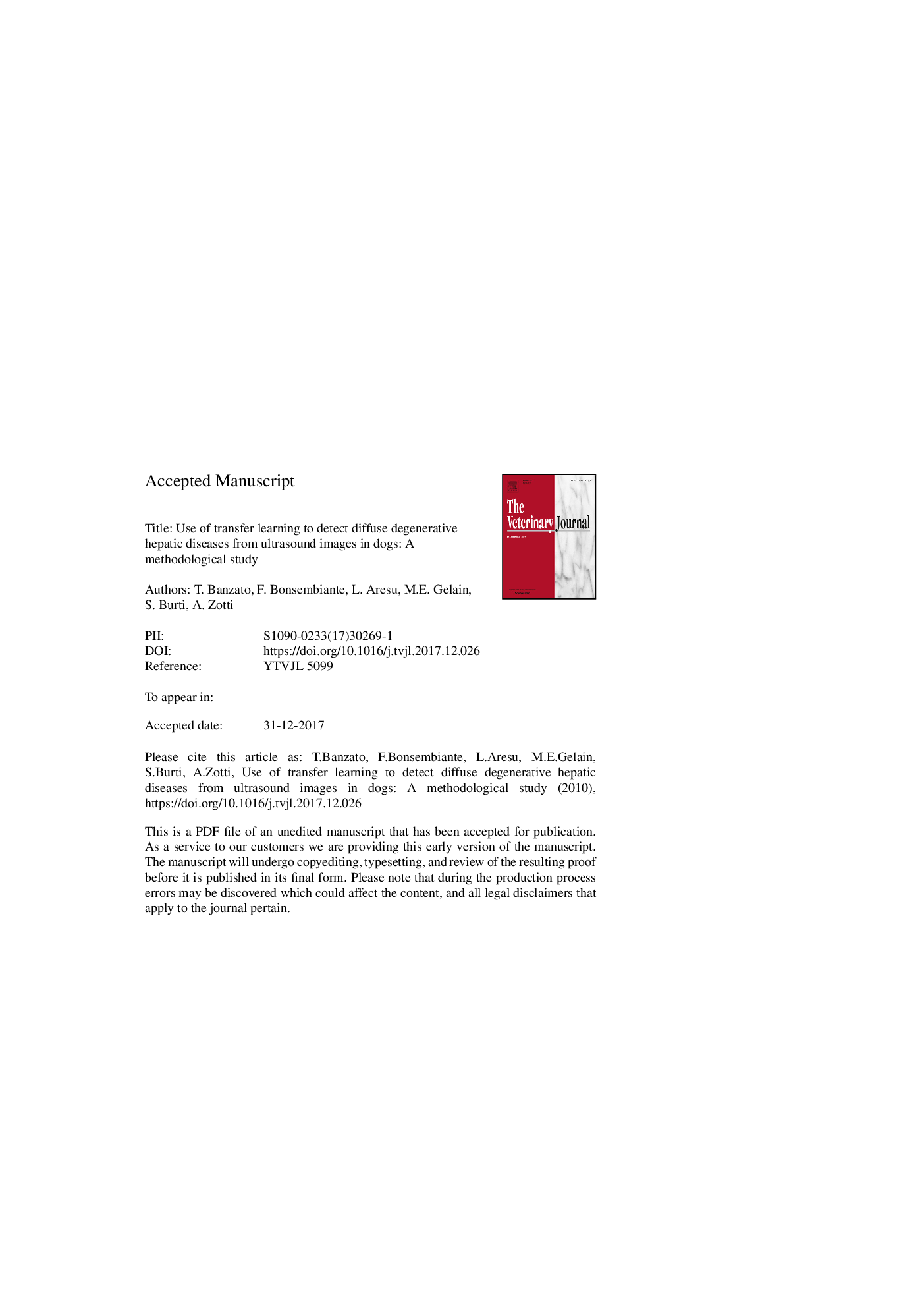| Article ID | Journal | Published Year | Pages | File Type |
|---|---|---|---|---|
| 8504914 | The Veterinary Journal | 2018 | 24 Pages |
Abstract
The aim of this methodological study was to develop a deep convolutional neural network (DNN) to detect degenerative hepatic disease from ultrasound images of the liver in dogs and to compare the diagnostic accuracy of the newly developed DNN with that of serum biochemistry and cytology on the same samples, using histopathology as a standard. Dogs with suspected hepatic disease that had no prior history of neoplastic disease, no hepatic nodular pathology, no ascites and ultrasonography performed 24 h prior to death were included in the study (n = 52). Ultrasonography and serum biochemistry were performed as part of the routine clinical evaluation. On the basis of histopathology, dogs were categorised as 'normal' (n = 8), or having 'vascular abnormalities'(n = 8), or 'inflammatory'(n = 0), 'neoplastic' (n = 4) or 'degenerative'(n = 32) disease; dogs with 'neoplastic' disease were excluded from further analysis. On cytological evaluation, dogs were categorised as 'normal' (n = 11), or having 'inflammatory' (n = 0), 'neoplastic' (n = 4) or 'degenerative' (n = 37) disease. Dogs were categorised as having 'degenerative' (n = 32) or 'non-degenerative' (n = 16) liver disease for analysis due to the limited sample size. The DNN was developed using a transfer learning methodology on a pre-trained neural network that was retrained and fine-tuned to our data set. The resultant DNN had a high diagnostic accuracy for degenerative liver disease (area under the curve 0.91; sensitivity 100%; specificity 82.8%). Cytology and serum biochemical markers (alanine transaminase and aspartate transaminase) had poor diagnostic accuracy in the detection of degenerative liver disease. The DNN outperformed all the other non-invasive diagnostic tests in the detection of degenerative liver disease.
Related Topics
Life Sciences
Agricultural and Biological Sciences
Animal Science and Zoology
Authors
T. Banzato, F. Bonsembiante, L. Aresu, M.E. Gelain, S. Burti, A. Zotti,
